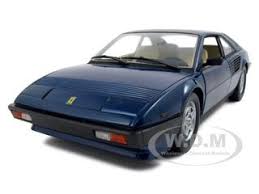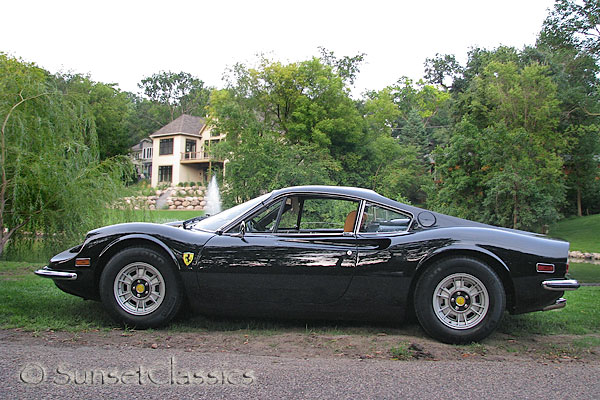




The Ferrari 328 GTB and GTS were introduced in the late 1985 early 1986 years. Depending upon who you talk with this model is sometimes considered the last of the 308 series and sometimes a unique model of its own.
The major change from the 308 to the 328 was an increase in engine size from 3.0 to 3.2 which was the reason for the model name change. This increase gave the car 270 bph at 7,000 rpm. Like the earlier 308s the engine was mounted cross wise in a mid engine position.
From the outside the front and rear bumpers were now painted the same as the body color, rather than black as on the 308s. Initial tires were 205/55 front and 225/50 rears. This was identical to late model 308s for the American market. One unique problem with this tire arrangement was that the front spare tire compartment would only accommodate the 205/55 front tire. So if you had a flat in the rear, your spare tire was the wrong size. If you insisted in using it, your next problem was that you could not close the hood on the 225/50 rear tire as it was just too large to fit the cavity.
Top speed was claimed 158mph just as the QV before it. However, it was slightly faster in 0 to 60 mph by 2 tenths of a second. You could feel the extra horsepower and torque while driving the 328, even though the acceleration numbers did not suggest it.
In addition to the change in paint on the bumpers there were dozens and dozens of minor changes to the car. Towards the end of the run, ABS was introduced. One way of telling was the change in the wheels; however some late 328s had the later wheels but not ABS.
1,348 GTBs were produced and 6,068 GTSs from 1985 until 1989. The open top car was much more popular as can be seen from the production numbers. On the open market they also bring about $5,000 more for a used car. The interesting thing though is that the closed GTB was a little better handling, because of its extra stiffness. The downside was the GTB was also much warmer inside as the open top model allowed some of the heat from the radiator pipes to escapee.
The 328 was the last model Ferrari to use the cross engine location in the mid engine position. Its successor, the 348 had the engine switch to a longitudinal design. It has always been a slight controversy as to which engine position was better. One fact is true however, major engine work on the 308 and 328 series can be done with the engine remaining in the car. Later Ferrari cars had to have the engine removed.















 c
c





 original
original